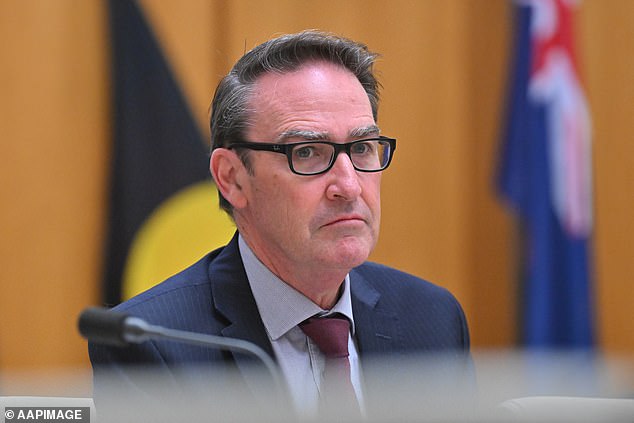Hopes for an interest rate cut in February are fading after the central bank warned the Australian economy is still too hot.
Interest rates have been left unchanged and the Reserve Bank of Australia remains steadfast in its fight against inflation, even after lowering its expectations for the economy.
On Tuesday, the bank kept the cash rate at 4.35 percent for the 12th consecutive month after its board meeting, in a move that was widely expected.
Some economists expected a more pronounced change in tone to reflect recent progress on inflation and the bank’s updated forecasts.
ANZ Australian economics director Adam Boyton said the important final paragraph of the post-meeting statement remained largely unchanged, and the central bank was not yet “ruling anything out” in its next decision.
“While headline inflation has fallen substantially and will remain low for some time, core inflation is more indicative of inflationary momentum and remains too high,” the RBA board said in the statement.
Boyton hoped for “a further step towards neutrality”, especially given that the accompanying November statement on monetary policy included lower forecasts for core inflation, wages and economic growth.
“While most of these are small changes, the forecasts appear to have evolved in a more neutral direction than the rhetoric,” he said.
On Tuesday, the Reserve Bank of Australia (pictured) kept the cash rate at 4.35 per cent for the 12th consecutive month following its board meeting.
The big four banks’ predictions for a rate cut in February have become even more “narrow”, analysts at National Australia Bank said.
NAB senior economist Taylor Nugent said the central bank had a high bar to clear before it started cutting rates.
“That’s an environment where the risk is tilted firmly towards a later start than the NAB’s February expectations,” he said.
The RBA would need to see unemployment rise noticeably in the next three jobs updates before its February meeting for the NAB prediction to come true.
In its monetary policy statement, the RBA updated its peak unemployment prediction from 4.4 percent to 4.5 percent.
Australia’s unemployment rate has remained relatively low, despite the recent migration influx, and that was “remarkable”, Treasury Secretary Steven Kennedy said.
“It’s declining now, but other countries, I mentioned a couple – Canada, New Zealand – saw this, and their labor market outcomes are not as good,” he said at a Senate estimates hearing on Wednesday.
“To have seen these people flow into supply through employment and to see the aggregate rate stay low, it’s fantastic, it’s an excellent result.”
Treasurer Jim Chalmers said it had been more than a year since interest rates rose, reflecting the government’s work to curb inflation.
The RBA’s updated forecasts also showed “welcome and encouraging progress in the fight against inflation”.
“What this shows is that we have been able to fight inflation without ignoring the risks to growth and without sacrificing the progress we have made in the labor market,” Mr Chalmers told parliament.

Treasury Secretary Steven Kennedy, during a Senate estimates session in Parliament in Canberra on Wednesday (pictured), said unemployment remained relatively low.
But shadow treasurer Angus Taylor said Australia was lagging behind its peers because increased spending was creating an imbalance between supply and demand.
“Everyone is helped by lower inflation and lower interest rates, and what we heard yesterday from the Reserve Bank is that interest rates are going to be higher for longer,” he told ABC Radio.
Kennedy said public spending had contributed strongly to demand in the economy over the past year.
“For some time we have been especially interested in the infrastructure market, as well as the size of the pipeline and its costs,” he said.
Kennedy said there were mixed opinions about the impact infrastructure projects have on the workforce available for housing construction.
“We would all like to see more economic activity that enables infrastructure, but it has to be done in a reasonable and proportionate way.”

